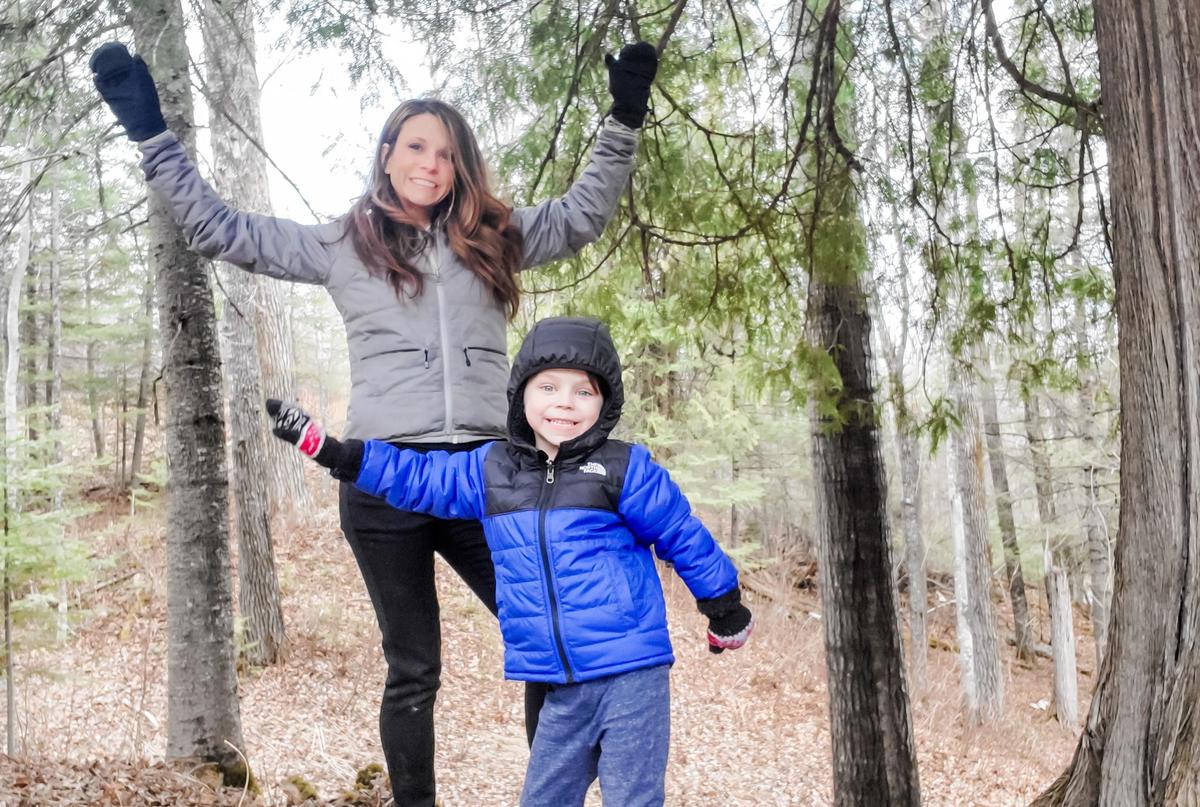From wild pigs in California to wild birds in Minnesota – Alexis Grinde’s career as a wildlife ecologist has introduced her to some interesting critters.
After leaving California in 2004, birds quickly became her focus, even as she taught biology courses at Pine Technical and Community College in Pine City, Minn. Grinde began a doctorate degree at UMD in 2011 under the guidance of Jerry Niemi, NRRI’s lead ornithologist and then-director of NRRI’s Center for Water and the Environment.
Today, Grinde leads six ornithologists in the Forest and Land Group at NRRI. But like a kid with new toys, she’s especially excited that her team will get to use new tools to track birds this field season.
“We are deploying a variety of tags on different species – sharp-tailed grouse, American woodcock, golden-winged warbler and boreal chickadee,” Grinde explained. “Some send information via satellite, others send data via cell phone towers. We will also continue to use traditional radio-telemetry methods for the smaller birds too.”
With a focus on ecology and conservation, Grinde and her team use birds and bird communities as indicators of environmental change. The information gathered is critical for long-term conservation of biodiversity and informing land management conservation efforts.
The new technologies will gather information previously unobtainable. Scientists will be able to know what habitats are important at different life stages, also how and when the birds move locally and across the continent. This basic information is needed to make science-based decisions promoting environmental sustainability for humans and wildlife.
“It’s an exciting time to study birds,” said Grinde. “These technologies are relatively new and provide a wonderful opportunity to learn about birds during critical time periods in their life cycle.”
Partnering
Because birds move great distances, relying on the environment to sustain them, they encounter human impacts – resource extraction, buildings, pollution – that can harm them. Research partners, like the Minnesota Land Trust, Minnesota Department of Natural Resources and the U.S. Forest Service, work with Grinde and her team to look at the ecosystems holistically and translate the information to on-the-ground impact.
“We can ask questions such as, how can forest management improve habitat for this species, or how environmental pollutants might impact a species of concern,” she said.
Supported
The Avian Ecology Research Lab has field projects year-round, purchasing a lot of supplies and equipment and using the vehicle fleet often to collect data across the state and region. Grinde relies on the support of Central Administrative Specialist Tammy Thomasson-Ehrhart to keep it all straight.
“She is a wonderful resource and makes sure we’re following all of the proper procedures,” said Grinde. “Tammy is also kind and thoughtful. She’s the best.”
Post-pandemic plans
Grinde and her sisters were planning a trip to Scotland as the coronavirus lock-down and travel restrictions were put in place a year ago. She wants to see the unique Puffin colonies and a sip a wee bit of Scottish whiskey.
“As soon as they’ll let us in, we are headed to Scotland!” she exclaimed.
PHOTO: Alexis Grinde and her 4-year-old son, Kai, enjoy spending time outdoors.
